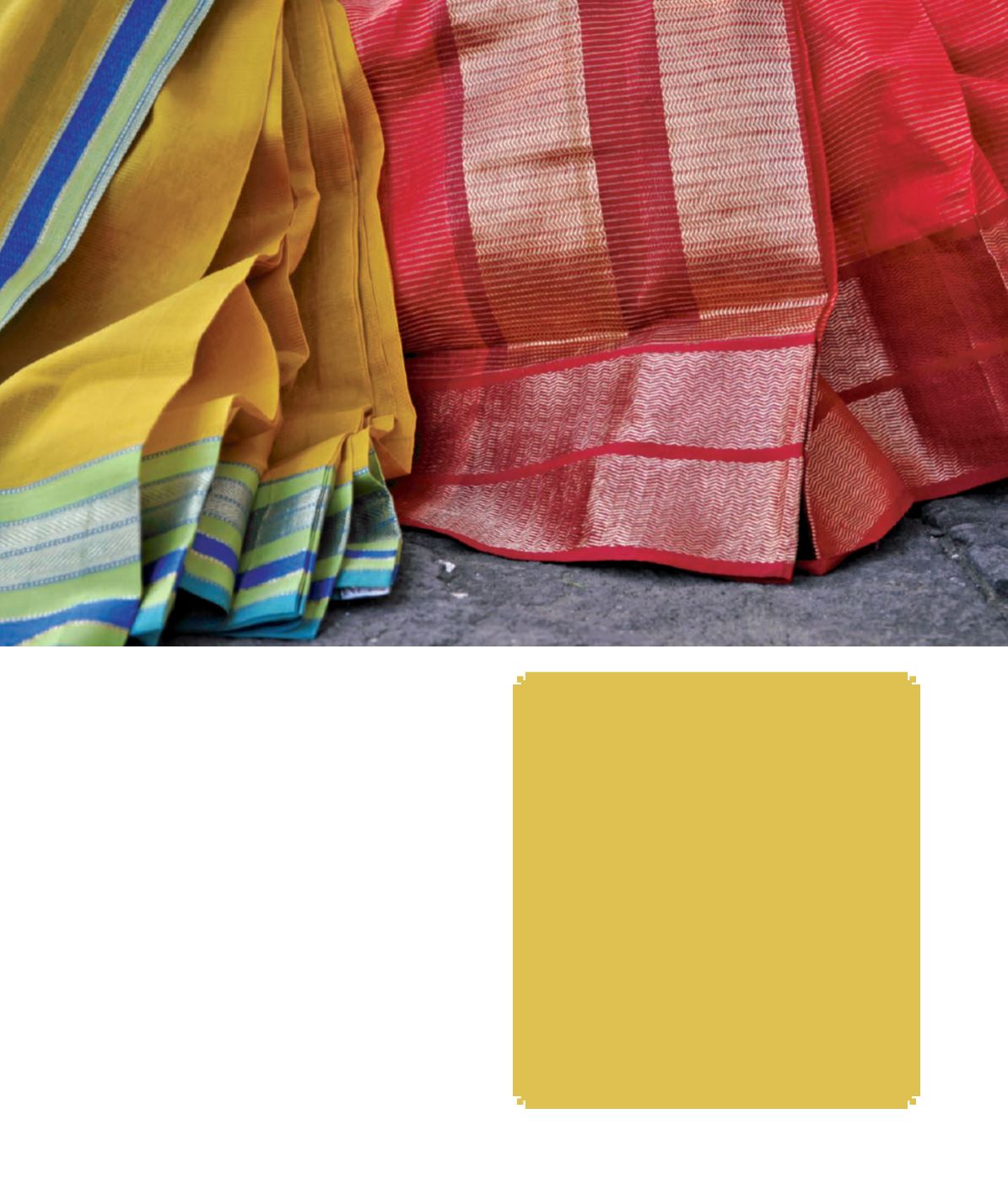
1800
All this simplicity limited the design possibilities. Some feel these
limitations are the charm of Maheshwar weaves, renowned for
their clean, neat and very delicate borders. Border designs such
as
Rui Phool, Eent, Bugdi
and
Chattai
are all derived from common
elements in the everyday life of the Maheshwar area and they
have a simple appeal of their own.
Now, having shared a bit of background on Maheshwar
weaving, I will speak of handloom as I have known of it in this
region since 1979.
REHWA Days
When REHWA Society was founded, there were barely three
hundred weavers left working in the town. In the former
lingarchan
(the place of worship for Hindus in our area, the
deities are reverently worshipped in the
Lingarchan
) at Ahilyabai’s
beautiful palace compound, we started a new training-cum-
production centre in 1979, taking its name – REHWA – from
the Sanskrit name of the Narmada River.
Through Leela Mulgaonkar, then chairperson of the Central
Social Welfare Board, we received a grant of
R
79,000 to train
Rui Pool –
The flower of the cotton plant is very common
in all the fields around Maheshwar and appears in June/
July. It is initially a pod which then transforms into a
cotton ball in September/October.
Eent –
This means bricks. Inspired from the bricks made
locally all around Maheshwar – a mixture of Narmada
mud and riverbank earth that is fired on the banks
of the river. Almost all the buildings, temples and
establishments are made of these local bricks.
Bugdi –
Bugdi
design is the most common saree border
design in Maheshwar. It is nothing but little arrow tips,
woven end to end.
Chattai –
This is a matting, just like the one that is seen
everywhere, made from the local
jungli (
wild) plant
stalks and woven into rough screens which are used for
many purposes including, for the poorest of the poor
who use it to make a crude dwelling for themselves and
their families


